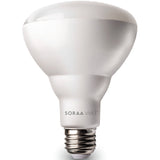LED Benefits Besides Greater Energy Efficiency
Posted by Dave on for ProLampSales

Fluorescent lighting technology has been around for a considerable length of time. Both linear fluorescent tubes and compact fluorescent bulbs have turned out to be reliable and economical, while producing the brightness required in public and working environments. Lately, however, a new form of light source has overtaken both fluorescent lighting and even older incandescent and halogen technology: The LED.
All sources of light have their advantages and disadvantages, yet LED appears to be wining the attention of many consumers who are skipping over fluorescent and going straight to LED lighting. Let's take a look to see why even the former diehards of fluorescent, incandescent, and HID bulbs are converting to LED.
Why LEDs Are the Future
According to customer reviews, people have been impressed by LED bulbs ability to illuminate instantly at full light output while compared to all other bulbs. This feature alone, combined with their energy efficiency and long life is very important for security and emergency exit sign applications. Furthermore, LED vehicle lights light up 200 milliseconds quicker than incandescent. This means that you have almost 20 feet of extra stopping distance at 65 mph, which can mean life or death for both vehicles and humans.
Unlike other bulbs, LED performance or life span is not affected by either frequent or rapid on-off cycling. While frequent switching will drastically reduce the operational life expectancy of traditional lighting, LED has risen to the occasion, making it suitable for traffic, signal lights, and all sorts of commercial display lighting.
LED fixtures and lamps are ideal for industrial and commercial operations compared to standard light bulbs due to their resistance to shock and vibration. Their design flexibility makes it easy to apply LED lighting to outdoor settings without fear of breakage under severe conditions.
Cold temperatures are a real test for fluorescent bulbs, which may have difficulty turning on quickly or turn on but the light output is extremely dim until it warms up. LEDs exceed expectations when operating temperatures drop by increasing their light output efficacy. They have therefore gained popularity for freezer rooms applications and outdoor winter settings, including garage lights which may be difficult to replace but only necessary for a few minutes or seconds at a time.
LEDs produce negligible ultraviolet (UV) and infrared (IR) radiation making them more suitable for retail, museums, or even household lighting where art in a gallery, fabrics, and food materials could be influenced by heat from both UV and IR.
- Posted in Energy Efficiency, LED
Featured Products (View All)
0 Comments




